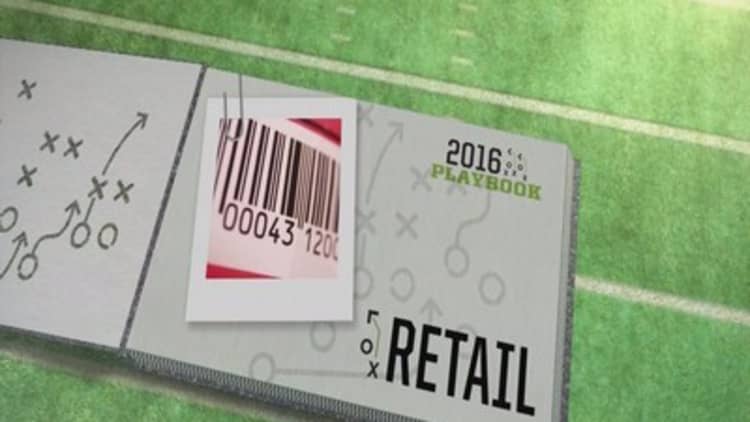Lose 10 pounds. Stop swearing. Get organized.
As people across the U.S. get started on their New Year's resolutions (that is, if they haven't already broken them), there's one item at the top of many consumers' lists: Removing the clutter from their closets.
Enter online resale sites The RealReal and thredUP, which are bracing for a lift in the number of secondhand items listed on their sites.
At The RealReal, a digital consignment shop for luxury brands, the number of items listed on its marketplace typically rises between 5 percent and 10 percent during January. That's up from a typical monthly increase, which averages closer to 2 or 3 percent.
The December to January period also experiences a major spike in the number of items sold with the tags still on them. Whereas typically 4 percent of the consigned items purchased by The RealReal still have tags, that figure spiked to 38 percent during December 2014 and January 2015.
Meanwhile, thredUP, which resells brands from H&M to Gucci, saw a greater-than-60 percent increase in the number of items for sale on its site from December to January. Although the private company declined to share how much greater that spike is than its typical month-to-month supply growth, it said it is "significantly larger."
"It's a combination of people wanting to clean out their closet after the holidays, as well as … [gifts] that maybe people didn't want, or wanted a different color," said Rati Sahi Levesque, chief merchant at The RealReal.
According to Anthony Marino, chief marketing officer at thredUP, up to two-thirds of the items in an American household are not worn over the course of the year. That means the average adult could sell two or three Hefty bags full of unworn clothing — or roughly 60 pounds' worth — every year.
Most of the time, the issue is not that the piece has been worn out or has fallen out of style, Marino said. Instead, it's that the person never thought they looked good in the item, but felt guilty about tossing it from their closet, he said. However, many Americans view the new year as an opportunity to get their lives in order — and purge their wardrobes of unworn items in the process.
"When I clean out my closet, I feel good about it, and it's a lot easier to do than trying to lose 20 pounds," Marino said.
According to Marino, thredUP also sees a spike in supply around March and April — a result of spring cleaning — and in the fall, before kids go back to school. Fall is also when moms look to recycle their old clothing and buy something "new" for the cooler weather, he said.
Similarly, Levesque said The RealReal sees a lift in the spring that's comparable to that of the new year. The start to summer and fall see a smaller boost from the changing seasons.

But consumers aren't just using these sites to get rid of excess merchandise. They're also using them as a traditional marketplace, through which they can swap out their unworn items for new duds. At The RealReal, Levesque said 80 percent of the items listed sell within three days.
In 2015, its most popular brands were high-fashion labels Chanel, Louis Vuitton, Céline, Cartier and Hermès. At thredUp, which appeals to a more typical consumer base, popular brands include Zara, Topshop, Rag & Bone, Diane von Furstenberg, Banana Republic, J. Crew, Lululemon and Nike.
Because both companies are private, neither would share details about their financials. But Marino said thredUP has processed and resold more than 14 million items since it started in 2009, and the number of new items added to the site in 2015 was double that of the prior year. He added revenues are growing at a double-digit quarter-over-quarter rate.
At The RealReal, Levesque said the company would double its revenue in 2015, and expects to do so again in 2016.
"I think over the long term we expect to see the seasonal spikes in supply to actually level out because people are getting more and more routine about the way they treat the clothes they are no longer wearing," Marino said.
"The ease of it is really making it so much simpler and convenient for people to make it a regular part of their lives."


